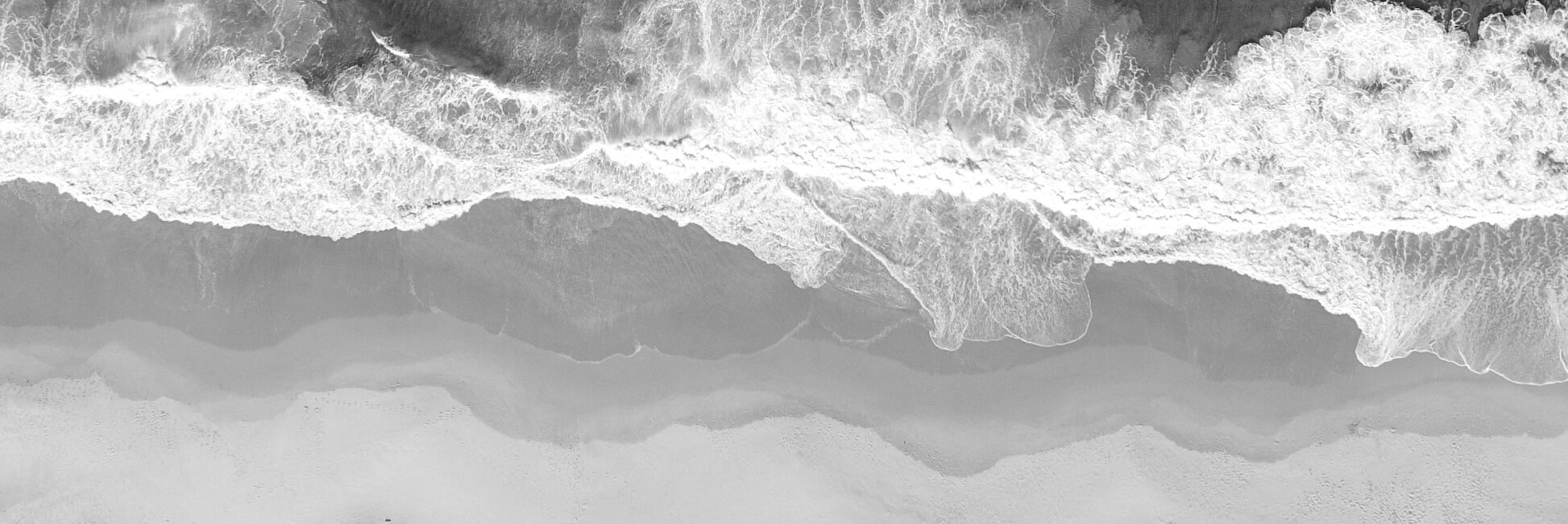When considering breast augmentation (mammaplasty), many people automatically think of breast implants as the sole option. However, studies have shown that breast lifts (mastoplexy) have begun outpacing implants in terms of patient preference. This shift reflects a growing desire to restore natural breast contours rather than simply focusing on size enhancement.
It is important to consider that both procedures deliver distinctly different outcomes, and the procedure that is chosen will depend on several factors and considerations. In this post, we will discuss the key differences between these two procedures, how each works, expected results, recovery times, and cost considerations.
Key Differences Between Breast Lifts (Mammaplasty) and Implants
A breast lift (Mastopexy) and breast implants are both designed to address specific aesthetic concerns, but they work in very different ways and deliver distinct outcomes.
Breast Lift (Mastopexy)
A breast lift (Mastopexy) focuses on repositioning and reshaping the existing breast tissue without adding volume. This procedure is typically used in patients who experience a loss of breast firmness and shape, often due to factors such as ageing, pregnancy, weight fluctuations, or genetics.
During a breast lift (Mastopexy), excess skin is carefully removed, and the surrounding tissue is tightened to restore firmness. The underlying breast tissue is then lifted and reshaped, resulting in improved breast position and symmetry. A breast lift (Mastopexy) is best suited for patients who are satisfied with their breast size but want to correct sagging or drooping.
Breast Implants (Augmentation Mammaplasty)
Breast implants (Augmentation Mammaplasty) are designed to increase breast volume and shape. This procedure involves the use of implants, typically saline or silicone, that are inserted either under or over the muscle to add fullness to the breasts.
Saline implants are filled with a sterile saltwater solution and are typically recommended for patients with sufficient natural breast tissue, as they provide volume enhancement while maintaining a natural look and feel. More expensive silicone implants offer a more natural-feeling result and suit patients with minimal existing breast tissue. Both implant options come in various sizes and shapes, allowing a personalised approach.
When To Consider Breast Lifts (Mastopexy) Vs Implants
The choice between a breast lift (Mastopexy) and implants depends largely on the patient’s characteristics and aesthetic preferences. However, there are additional factors to consider, which will be discussed further in this post.
Breast Lift Candidates:
- Decreased breast tissue elasticity
- Noticeable breast ptosis (sagging)
- Downward-pointing nipples
Breast Implant Candidates:
- Enhanced breast volume
- Upper pole fullness (the upper part of the breast)
- Improved breast symmetry
- Volume restoration after pregnancy or weight loss
For some patients, a combination of both procedures, known as augmentation-mastopexy, may be a suitable option. This approach addresses both the need for volume and the desire for breast repositioning. This does require more extensive surgery and a longer recovery time.
Comparing Surgical Techniques
The choice of surgical technique for both breast lifts (Mastopexy) and implants depends on a detailed anatomical assessment and the patient’s goals. Surgeons consider factors such as the degree of breast ptosis (sagging), physiology, tissue characteristics, implant specifications, and desired aesthetic outcomes when determining the most suitable approach.
Breast Lift (Mastopexy) Incision Types
Modern breast lift (Mastopexy) surgery uses precise incision patterns tailored to the degree of breast ptosis and the unique tissue characteristics of each patient. The most commonly used incision techniques include:
- Crescent Lift: This technique is reserved for patients with minimal breast sagging. The crescent lift involves a small, discrete incision along the superior (upper) border of the areola. It offers subtle lift with minimal scarring.
- Periareolar or “Donut” Lift: In this method, a circumferential incision is made around the areola. This approach is particularly effective for mild ptosis and areolar reduction. The donut lift is known for leaving minimal visible scarring, as the incision is confined to the border of the areola.
- Vertical or “Lollipop” Lift: The vertical lift combines a circumareolar incision with a vertical incision extending down from the areola to the inframammary fold (beneath the breast). This technique is suited for moderate ptosis and provides more comprehensive reshaping of the breast tissue while still keeping the scar placement discreet.
- Inverted T or “Anchor” Lift: For severe ptosis, the inverted T, or anchor pattern, is used. It involves three incisions: around the areola, vertically down to the inframammary fold, and along the fold itself. While this method results in more visible scarring, it allows for significant tissue redistribution and offers advanced lifting results.
Implant Placement Methods
For breast augmentation (Mammaplasty), surgeons typically use one of two main methods for implant placement, depending on the patient’s body type and desired result:
- Subglandular Placement: In this method, the implant is placed between the chest muscles and the mammary tissue (glandular tissue). It is associated with reduced post-operative discomfort, faster recovery times and stable implant positioning, especially during physical activity
- Submuscular Placement: In this technique, the implant is positioned beneath the pectoralis major muscle. This placement provides enhanced mammographic visualization (important for breast cancer detection), a more natural-looking upper breast pole (the top portion of the breast) and a decreased risk of capsular contracture (a potential complication where scar tissue hardens around the implant)
Access to the breast tissue during surgery can be achieved through several established entry points:
- Inframammary Access: The incision is made in the natural fold beneath the breast.
- Periareolar Placement: An incision is made around the border of the areola and provides a more discreet scar placement.
Recovery Timeline
Recovery timelines for breast lift (Mastopexy) and breast augmentation (Mammaplasty) procedures vary significantly due to the distinct nature of each surgery. Both procedures have their own phases of healing, and recovery guidance from the surgical team is critical for optimal results. Below is a comparison of recovery milestones for both procedures.
Breast Lift (Mastopexy) Recovery Timeline
| Recovery Phase | Timeline | Details |
| First Week After Surgery | Days 1-7 | Peak discomfort and swelling (edema) occur around 72 hours after surgery. Analgesic medications are prescribed initially, transitioning to over-the-counter pain relief as healing progresses. |
| Return to Normal Activities | Day 7 | Most mastopexy patients can return to office-based work after one week. Avoid any heavy lifting or strenuous activities. |
| Resuming Physical Activity | Week 2 | Gentle exercises, such as walking, can begin after two weeks. No upper body resistance training until at least six weeks post-surgery. |
| Complete Healing Milestones | 6-8 Weeks | Complete tissue recovery within 6-8 weeks. Residual swelling resolves by week 8. Scar maturation continues through 12 months, and underwire bras may be worn after 8 weeks. |
Breast Augmentation (Mammaplasty) Recovery Timeline
| Recovery Phase | Timeline | Details |
| First Week After Surgery | Days 1-7 | Maximum discomfort occurs within the first 48 hours. Submuscular implant placement increases muscle tension and affects mobility. Post-operative protocols, elevated sleep positioning, and restricted arm movement. |
| Return to Normal Activities | 7-10 Days | Patients may return to sedentary duties (e.g., office work) after 7-10 days, depending on individual recovery. |
| Resuming Physical Activity | Weeks 3-4 | Gentle cardiovascular activities may begin 3-4 weeks after surgery. Avoid upper body resistance training and load-bearing activities for at least 4 weeks, and high-impact activities for 6-8 weeks. |
| Complete Healing Milestones | 3-6 Months | Implants gradually settle into their final position. Initial tissue softening occurs by week 2, with progressive implant settlement over the next 3-6 months. Full recovery and implant positioning typically completed by six months. |
Cost Considerations
Breast augmentation (Mammaplasty) is a significant financial investment. The total cost can vary based on factors such as the complexity of the procedure, the surgeon’s expertise, and specific patient requirements.
- Breast Augmentation (Mammaplasty): Costs begin at $10,000 and can go as high as $20,000 or more. The final price can be influenced by factors such as the type of implants used (saline vs. silicone), the complexity of the procedure, and the surgeon’s fees.
- Breast Lift (Mastopexy): Generally ranges from $9,000 to $15,000 and higher. Costs can vary based on the degree of breast ptosis (sagging), the surgical technique employed, and the surgeon’s level of expertise.
It’s important to note that prices will differ between surgeons and geographical regions, so getting a detailed cost breakdown from a qualified specialist will help manage expectations and plan accordingly.
Additional Expenses to Consider
Beyond the cost of the surgery itself, there are additional post-operative expenses that should be taken into account:
- Specialised Compression Garments (if required)
- Scar Therapy Treatments
- Follow-up Appointments
- Potential Surgical Revisions and Adjustments
Expected Lifespan of Results
As cosmetic procedures, breast implants and breast lifts (Mastopexy) offer long-term results, but the expected lifespan and maintenance of these results can differ based on various factors, including lifestyle, age, and the specific procedure performed.
On average, breast implants can last between 10 to 20 years, though they may require replacement or revision sooner depending on factors like implant type, complications, and the patient’s lifestyle. Some patients may experience issues such as implant rupture, leakage, or capsular contracture, which may necessitate removal or replacement before the typical lifespan ends.
A breast lift (Mastopexy) can last for 10 to 15 years or more, depending on individual factors. However, the natural ageing process, changes in weight, and lifestyle factors can affect the longevity of the lift. While the breast tissue will be reshaped and lifted, it may gradually lose some of its firmness and shape due to natural aging factors.
Factors That Affect Results for Both Procedures
- Age and Genetics: A patient’s age and genetic predisposition to skin elasticity and tissue healing can significantly impact the longevity and appearance of both implants and lifts.
- Post-Operative Care: Following post-operative care instructions, including wearing support garments and avoiding strenuous activities, may be essential for ensuring the best long-term results.
- Lifestyle Choices: Habits such as smoking, which can impair blood circulation and tissue healing, can affect the quality of the results and may increase the risk of complications.
- Follow-Up Care: Regular check-ups with the surgeon can help monitor the condition of implants and assess the health of breast tissue, allowing for early intervention if needed.
Risk Factors To Consider
As with any surgical procedure, both breast lifts (Mastopexy) and breast implants come with inherent risks. It is important to be aware of the potential complications that can arise. Discussing these risks with the surgeon before undergoing surgery is essential to making an informed decision.
- Infection: Infections are a potential risk following any surgical procedure. In the case of breast lifts (Mastopexy) and implants, infections can occur at the incision sites or within the breast tissue. Infections may cause redness, swelling, increased pain, or fever and may require antibiotics or additional surgery to remove the implant or treat the affected area. Following post-operative care instructions, such as keeping the incision sites clean and attending follow-up appointments, can significantly reduce the risk of infection.
- Poor Scarring: Scarring is a normal part of the healing process, however, some patients may experience more noticeable scars. Factors such as genetics, skin type, and post-operative care play a role in the appearance of scars. Surgeons typically work to minimise scarring by using precise incision techniques, but patients should be aware that scarring may still be visible, particularly with more invasive procedures.
- Seroma (Accumulation of Fluid): Seroma is a condition where fluid builds up under the skin after surgery. It can cause swelling and discomfort and, if left untreated, may require drainage. While seromas are generally temporary and can be managed with proper care, they can lead to complications if not addressed promptly.
- Asymmetry: Some degree of asymmetry is possible after breast augmentation (Mammaplasty) or lift (Mastopexy). This can occur due to differences in natural breast tissue, implant placement, or healing patterns.
Breast implants also carry several potential risks that patients should consider:
- Wrinkling: In some cases, the implant may develop wrinkles, particularly with saline implants, which can affect the appearance of the breast.
- Leakage or Rupture: While rare, implants can rupture, leading to the loss of volume or changes in breast shape. A rupture in a saline implant will typically cause the implant to deflate, while a silicone implant rupture may not be immediately noticeable but can result in changes to breast shape and firmness. This will require prompt care to avoid further complications.
- Capsular Contracture: This occurs when the scar tissue around the implant tightens and hardens, leading to breast firmness, discomfort, and changes in shape. In severe cases, additional surgery may be required to remove or replace the implant.
Breast Lift (Mastopexy) Vs Breast Implants: A Quick Comparison
| Clinical Aspect | Breast Lift (Mastopexy) | Breast Augmentation (Mammaplasty) |
| Primary Objective | Tissue repositioning and reshaping | Volume enhancement and modification |
| Optimal Candidates | · Breast ptosis
· Inferiorly positioned nipple-areola complex · Diminished tissue elasticity
|
· Volume enhancement requirements
· Superior pole deficiency · Mammary asymmetry · Post-pregnancy volume restoration |
| Surgical Methodology | · Crescent technique
· Periareolar approach · Vertical pattern
· Inverted-T design |
Subglandular positioning Submuscular placement Dual-plane methodology |
| Initial Recuperation | 7 days – 2 weeks | -7 days – 4 weeks |
| Complete Recovery | 6-8 weeks | 3-4 months |
| Surgical Investment (AUD) | From $10,000 | From $11,000 |
| Result Duration | Multiple years without surgical revision | 10-15 years (prosthesis exchange required) |
| Outcome Variables | · Pregnancy effects
· Weight fluctuations · Natural tissue changes |
· Pregnancy effects
· Weight fluctuations · Prosthesis durability · Capsular contracture risk |
Conclusion
Breast lifts (Mastopexy) and breast implants are two distinct cosmetic procedures that require careful thought, as each addresses different aesthetic concerns and delivers unique results. Where a breast lift (Mastopexy) focuses on reshaping and repositioning the breasts, a breast implant adds volume and fullness.
Understanding the differences in surgical techniques, recovery, costs, and long-term outcomes is essential for making an informed decision. Similarly, thorough discussions and consultations with a qualified surgeon can help determine the most suitable option based on personal anatomy and desired results.
Dr Terrence Scamp, holding three decades of specialist plastic surgical expertise, demonstrates particular proficiency in rhinoplasty, mammaplasty, facial and body procedures.
Individual results vary as the outcomes experienced by one person, do not necessarily reflect the outcomes that other people may experience due to many factors, including the individual’s genetics, diet and exercise. Any surgical or invasive procedure carries risks.
Dr Terrence Scamp (MED0001157212) | Specialist Plastic Surgeon.






